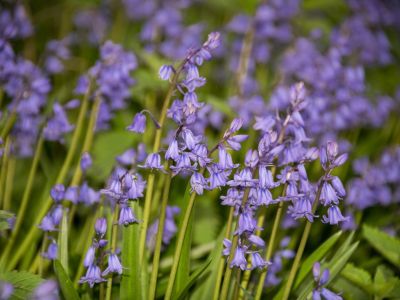English and Spanish Bluebells
English bluebells (Hyacinthoides non-scripta) are native to France and England and have been gracing gardens and wooded areas with their beautiful bluish-purple flowers since the early 1500’s. These spring delights reach heights of 12 inches (30 cm.) and can be planted in the fall for spring bloom. The flowers are fragrant and make a wonderful addition to any cut bouquet. An interesting feature of English bluebell is that the flowers are all on the same side of the stalk and, when gravity kicks in, the stalk bends in a dainty curve. Spanish bluebells (Hyacinthoides hispanica) are similar in many ways to English bluebells apart from the fact that they bloom in open areas and are rarely found in woods. Spanish bluebell stalks are straight and do not display the curve as seen in English bluebells. Spanish bluebells do not have as strong a fragrance as English bluebells either and tend to bloom a bit later. Flowers can be blue, pink or white.
Growing Bluebells
The care of wood hyacinth plants requires minimal energy. These easy-to-please bulbs naturalize rapidly and prefer well-drained soil with a high organic content. Like Virginia bluebells, wood hyacinths will thrive in shade or part-sun in the South and will tolerate full sun in northerly climates. Unlike some plants, bluebells will quickly multiply under the shade of large trees. Both English and Spanish Bluebells make excellent transition bulbs between early-spring bloomers and early summer perennials. Bluebells are excellent companions to hostas, ferns and other woodland native plants.
Planting Bluebell Flowers
Plant bluebell bulbs after the heat of summer has passed or in early fall. Several bulbs can be placed in the same 2-inch (5 cm.) deep hole. Water the bulbs frequently over the fall and winter for best performance. Divide during the summer months, once the plant has gone dormant. Bluebells grow best when they are left to naturalize in shade gardens or woodland settings.
